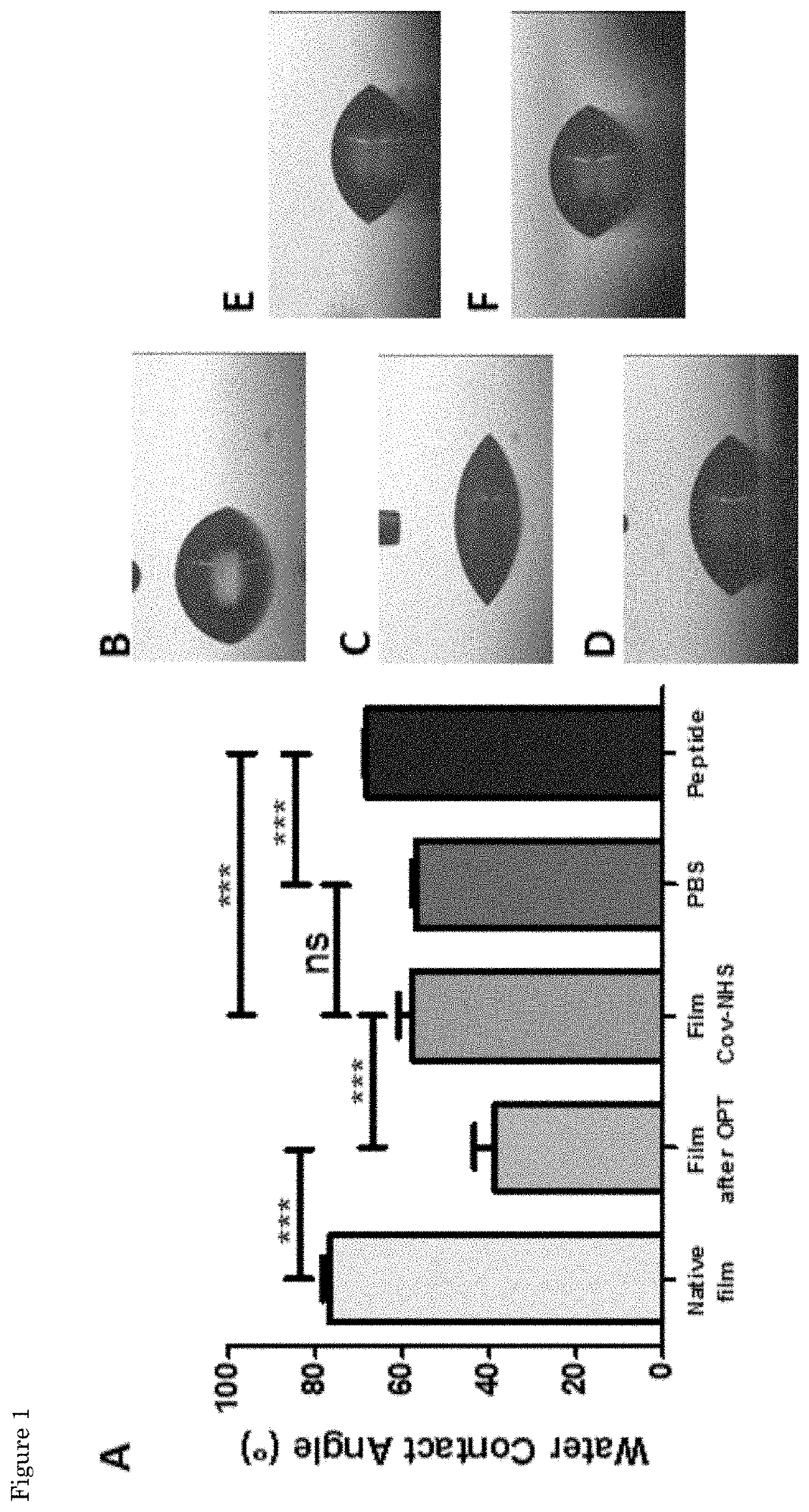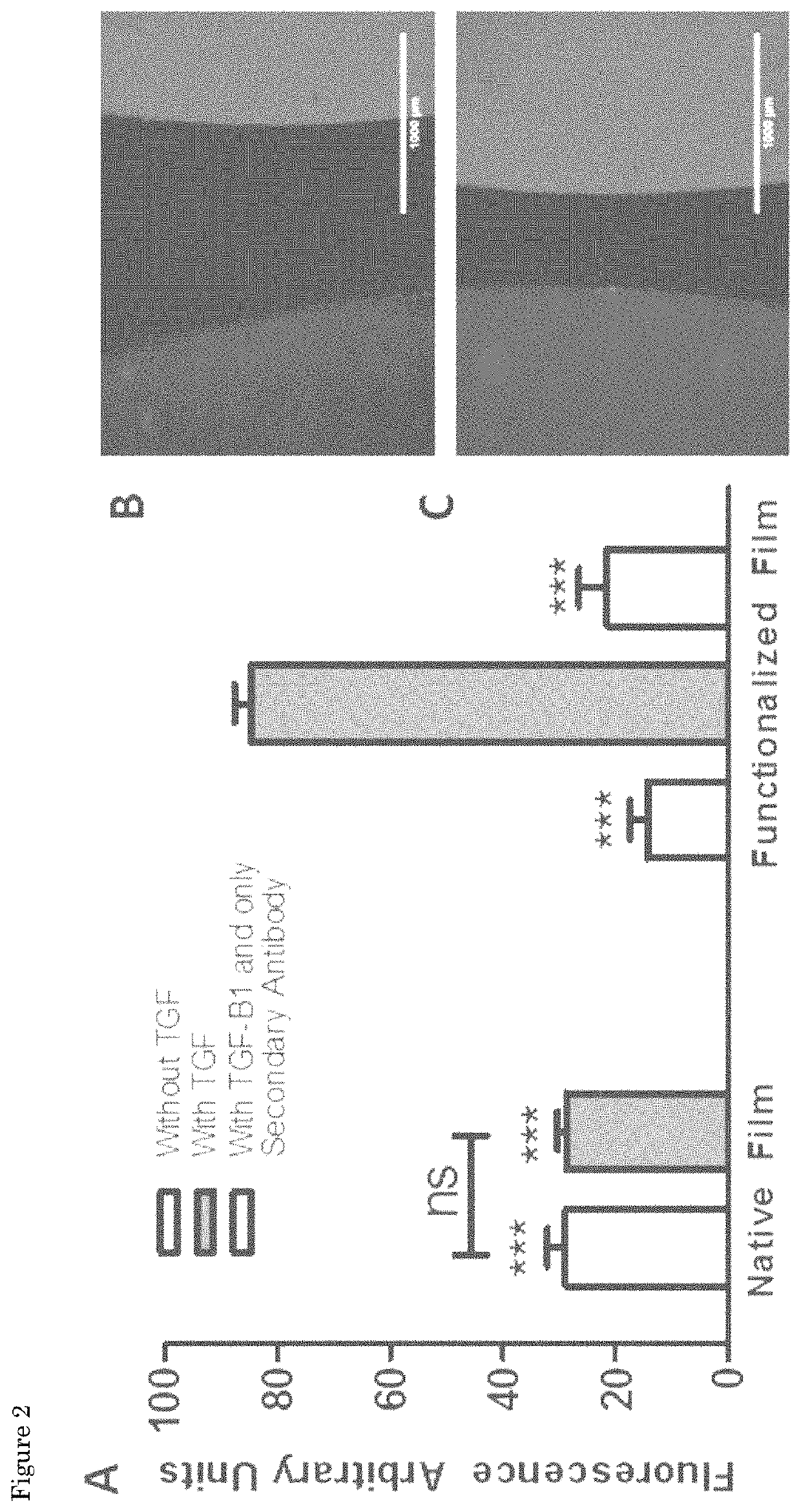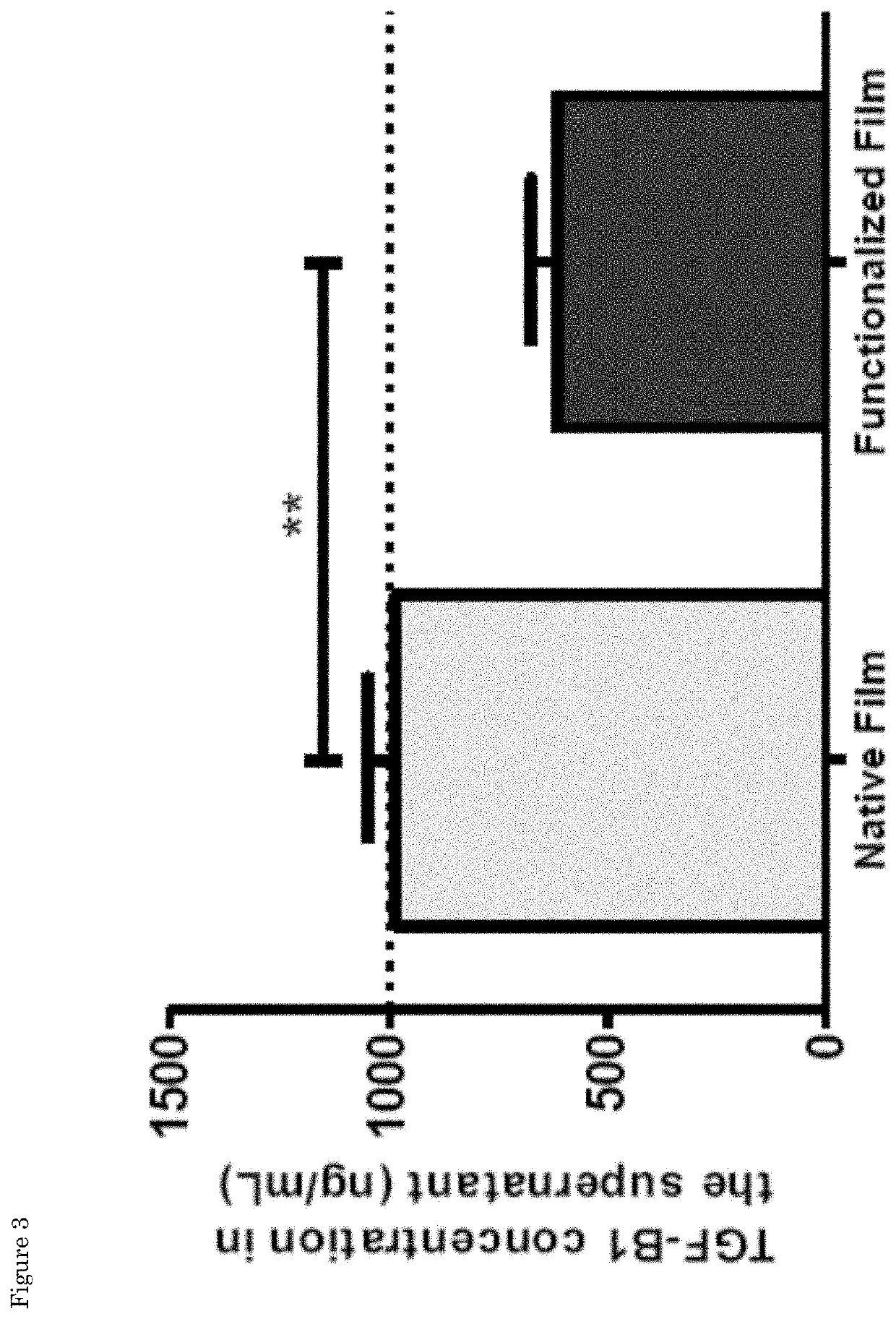Functionalization of biopolymers with growth factor-binding peptides
a biopolymer and growth factor technology, applied in the field of functionalized biopolymers, can solve the problems of increasing healthcare costs, affecting patient quality of life, and difficult to complete the healing of damaged tissue, and achieves the effects of enhancing cell migration, collagen production, and increasing cellularity
- Summary
- Abstract
- Description
- Claims
- Application Information
AI Technical Summary
Benefits of technology
Problems solved by technology
Method used
Image
Examples
example 1
tivation in Hamstring Cells Through GFs Binding Peptides on Polymers
Materials and Methods
Peptide Synthesis and Purification
[0093]The synthesis of the peptides sequences was performed using standard Fmoc-solid phase peptide synthesis in a Syro II MultiSynTech automated peptide synthetizer. The TGFB1 binding and scrambled peptide with sequences KGLPLGNSH (SEQ ID NO:3) and KGHNLGLPS, respectively, were prepared on Fmoc-Rink 4-methylbenzhydrylamine (MBHA) resin (Multisyntech GmBH, 50 mg scale, substitution 0.52 mmol / g), using 0.26 M of N,N,N′,N′-Tetramethyl-O-(1H-benzotriazol-1-yl)uronium hexafluorophosphate (HBTU), 0.52 M of N,N-Diisopropylethylamine (DIPEA), 2 M of piperidine and 0.29 M of each amino acid. The N-termini of the final peptide sequences were acetylated manually in 15.6% acetic anhydride, 29.9% DIPEA and 54.5% 1-Methyl-2-pyrrolidinone (NMP) for one hour at room temperature. The peptides were cleaved from the resin and amino acid side groups were deprotected using 95% trif...
example 2
ation of hBMP-2 on Polymers Directs Cell Fate
Materials and Methods
Materials
[0116]N,N,N′,N′-Tetramethyl-O-(1H-benzotriazol-1-yl)uronium hexafluorophosphate (HBTU) was obtained from MultiSynTech. Chloroform and 1-methyl-2-pyrrolidinone (NMP) were purchased from WR Chemicals. NaOH was obtained from Riedel-de Haën. All other reagents or products were purchased from Sigma-Aldrich unless noted otherwise.
Peptide Synthesis and Purification
[0117]The peptide sequences were synthetized using Fmoc-solid phase peptide synthesis on a Syro II MultiSynTech automated peptide synthesizer. The BMP-2-binding and scrambled peptides with sequences KGYPVHPST (SEQ ID NO:9) and KGTPVHYPS (SEQ ID NO:47), respectively, were prepared on Fmoc-Rink 4-methylbenzhydrylamine (MBHA) resin (MultiSynTech GmBH, 50 mg scale, substitution 0.52 mmol / g), using 0.26 M of HBTU, 0.52 M of N,N-diisopropylethylamine (DIPEA), 2 M of piperidine and 0.29 M of each amino acid. The N-termini of the final peptide sequences were manua...
example 3
Materials and Methods
Materials
[0137]N,N,N′,N′-Tetramethyl-O-(1H-benzotriazol-1-yl)uronium hexafluorophosphate (HBTU) was obtained from MultiSynTech. Chloroform and 1-methyl-2-pyrrolidinone (NMP) were purchased from WR Chemicals. NaOH was obtained from Riedel-de Haën. All other reagents or products were purchased from Sigma-Aldrich unless noted otherwise.
Peptide Synthesis and Purification
[0138]Peptides were synthetized using Fmoc-solid phase peptide synthesis in a Syro II MultiSynTech automated peptide synthesizer. The VEGF-binding peptide with the sequence KGSWWAPFH was prepared on Fmoc-Rink 4-methylbenzhydrylamine (MBHA) resin (MultiSynTech GmBH, 50 mg scale, substitution 0.52 mmol / g), using 0.26 M of HBTU, 0.52 M of N,N-diisopropylethylamine (DIPEA), 2 M of piperidine and 0.29 M of each amino acid. The N-terminus of the final peptide sequence was acetylated manually in 16% (v / v) acetic anhydride, 30% (v / v) DIPEA and 54% (v / v) NMP for one hour at room temperature. The peptide was c...
PUM
| Property | Measurement | Unit |
|---|---|---|
| thickness | aaaaa | aaaaa |
| pore size | aaaaa | aaaaa |
| pore size | aaaaa | aaaaa |
Abstract
Description
Claims
Application Information
 Login to View More
Login to View More - R&D
- Intellectual Property
- Life Sciences
- Materials
- Tech Scout
- Unparalleled Data Quality
- Higher Quality Content
- 60% Fewer Hallucinations
Browse by: Latest US Patents, China's latest patents, Technical Efficacy Thesaurus, Application Domain, Technology Topic, Popular Technical Reports.
© 2025 PatSnap. All rights reserved.Legal|Privacy policy|Modern Slavery Act Transparency Statement|Sitemap|About US| Contact US: help@patsnap.com



